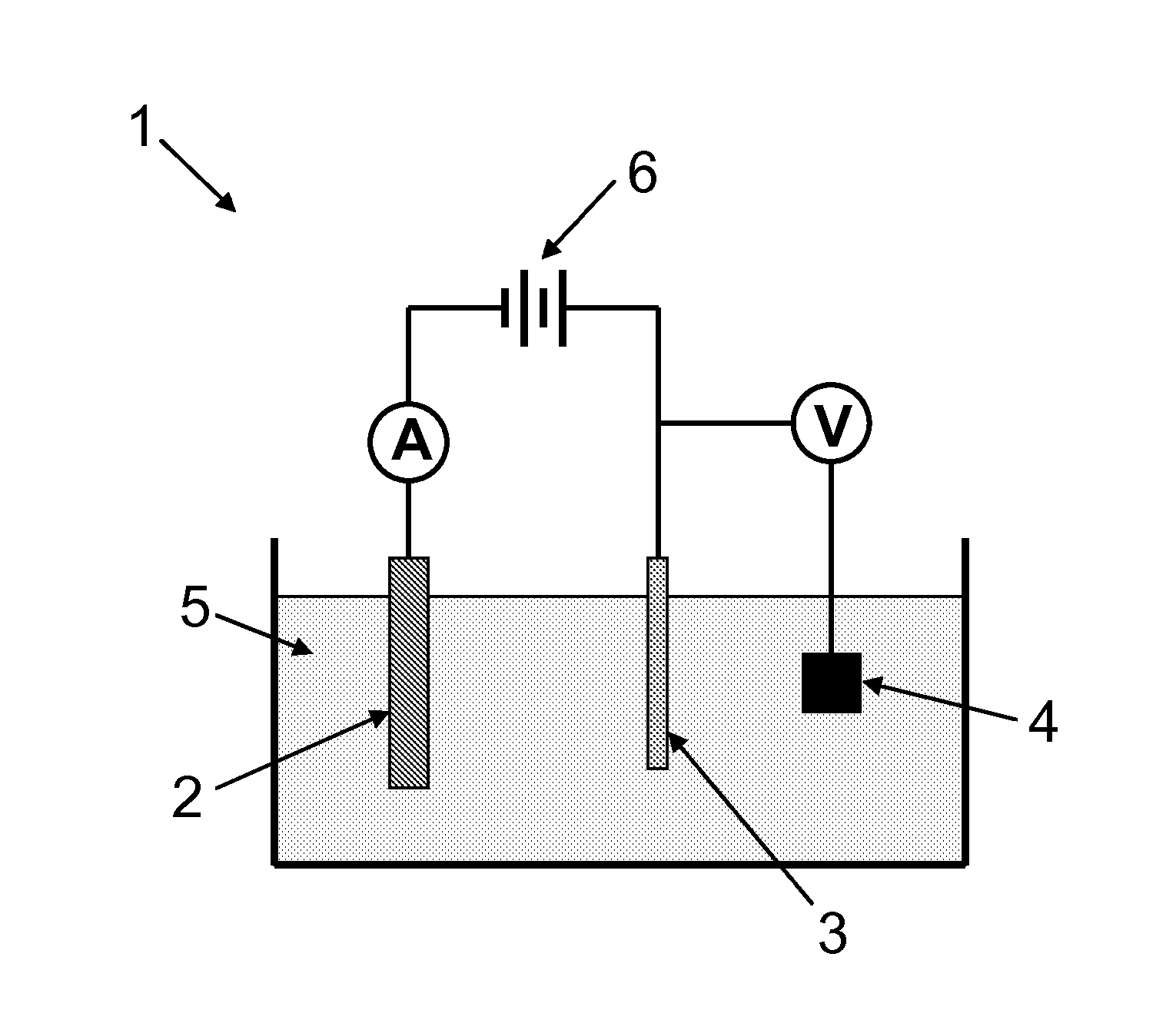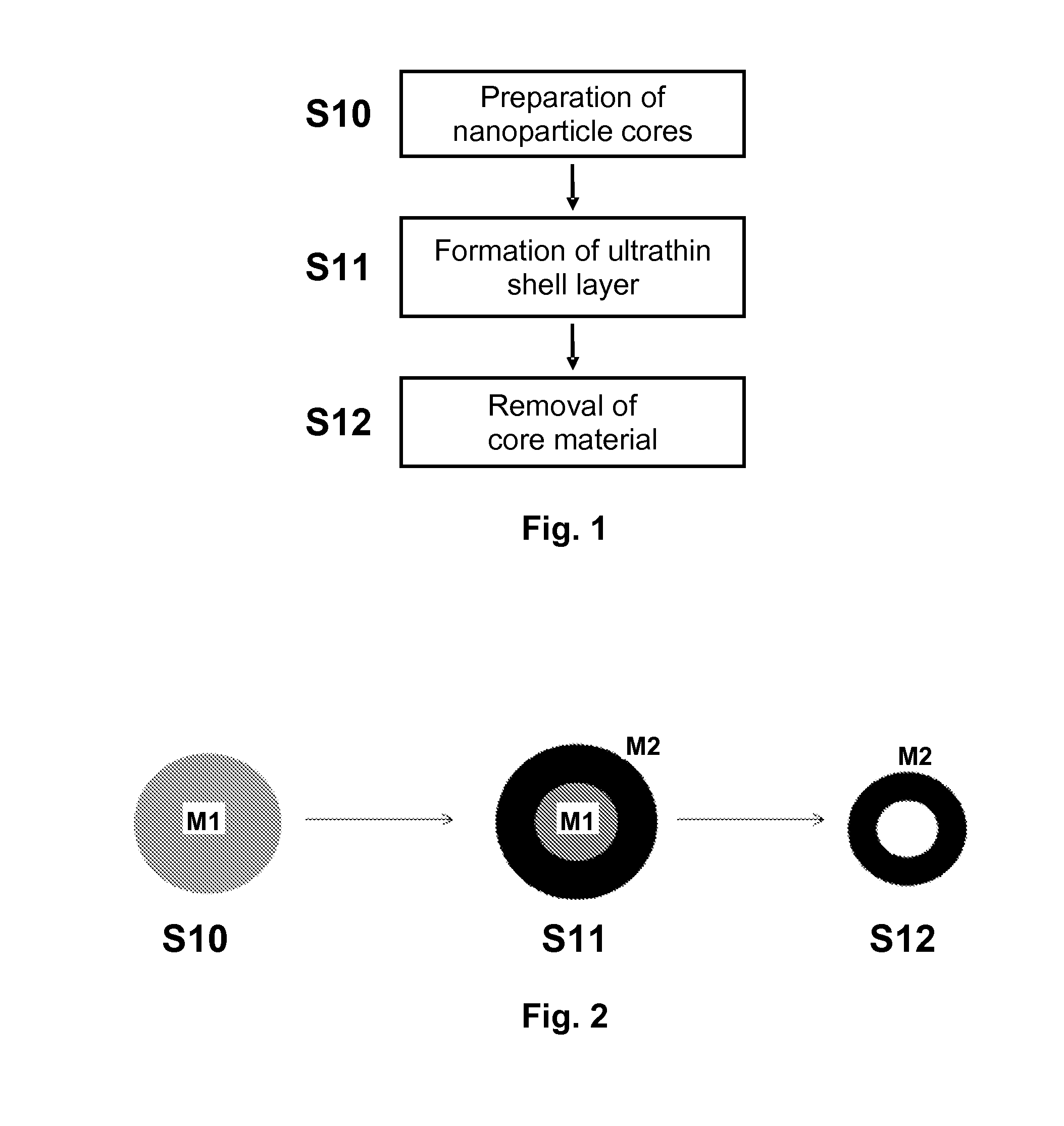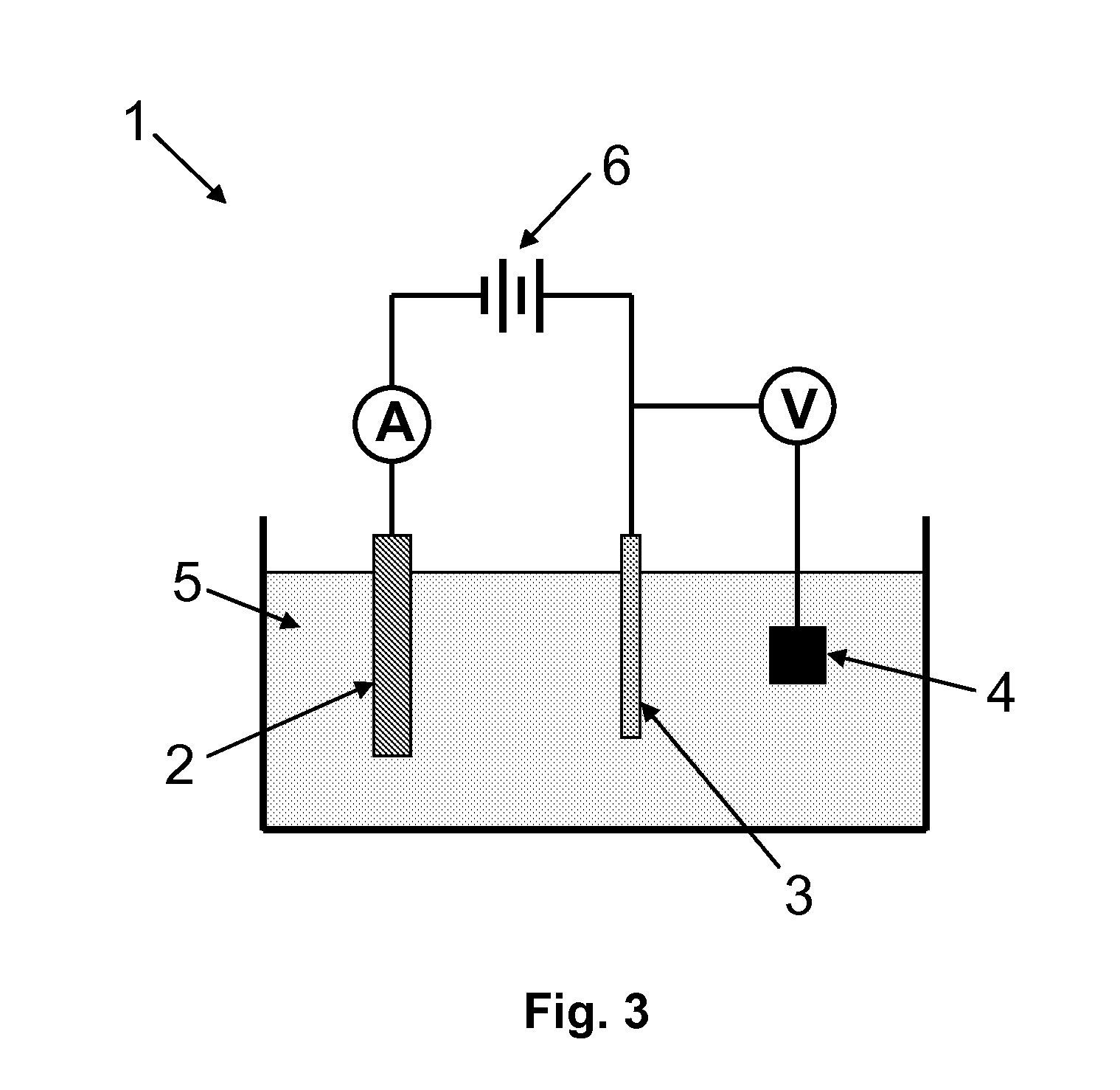Hollow nanoparticles as active and durable catalysts and methods for manufacturing the same
a catalyst and nanoparticle technology, applied in the field of hollow nanoparticles, can solve the problems of poor stability under cyclic, poor stability of metal/metal-oxide/metal-hydroxide catalysts, and inability to successfully implement them in commercially available energy conversion devices, etc., to achieve the effect of maximizing the catalytically active surface area, reducing the loading of precious materials, and improving stability
- Summary
- Abstract
- Description
- Claims
- Application Information
AI Technical Summary
Benefits of technology
Problems solved by technology
Method used
Image
Examples
Embodiment Construction
[0047]In the interest of clarity, in describing the present invention, the following terms and acronyms are defined as provided below:
Acronyms
[0048]ALD: Atomic Layer Deposition[0049]CVD: Chemical Vapor Deposition[0050]EELS: Electron Energy Loss Spectroscopy[0051]ESA: Electrochemical Surface Area[0052]DFT: Density Functional Theory[0053]HR-STEM: High-Resolution Scanning Transmission Electron Microscopy[0054]ICP: Inductively Coupled Plasma[0055]MBE: Molecular Beam Epitaxy[0056]NHE: Normal Hydrogen Electrode[0057]ORR: Oxidation Reduction Reaction[0058]PEMFC: Proton Exchange Membrane Fuel Cell[0059]PLD: Pulsed Laser Deposition[0060]STEM: Scanning Transmission Electron Microscopy[0061]TEM: Transmission Electron Microscopy[0062]UPD: Underpotential Deposition
Definitions
[0063]Adatom: An atom located on the surface of an underlying substrate.[0064]Adlayer: A layer of (atoms or molecules) adsorbed to the surface of a substrate.[0065]Bilayer: Two consecutive layers (of atoms or molecules) whic...
PUM
| Property | Measurement | Unit |
|---|---|---|
| thickness | aaaaa | aaaaa |
| thickness | aaaaa | aaaaa |
| thickness | aaaaa | aaaaa |
Abstract
Description
Claims
Application Information
 Login to View More
Login to View More - R&D
- Intellectual Property
- Life Sciences
- Materials
- Tech Scout
- Unparalleled Data Quality
- Higher Quality Content
- 60% Fewer Hallucinations
Browse by: Latest US Patents, China's latest patents, Technical Efficacy Thesaurus, Application Domain, Technology Topic, Popular Technical Reports.
© 2025 PatSnap. All rights reserved.Legal|Privacy policy|Modern Slavery Act Transparency Statement|Sitemap|About US| Contact US: help@patsnap.com



